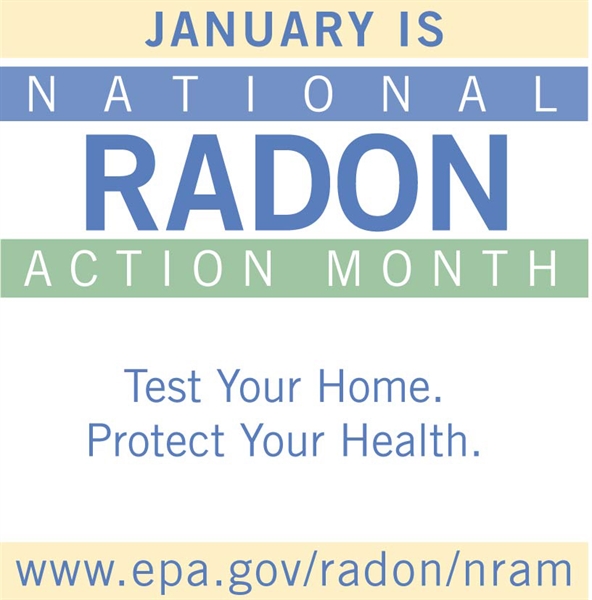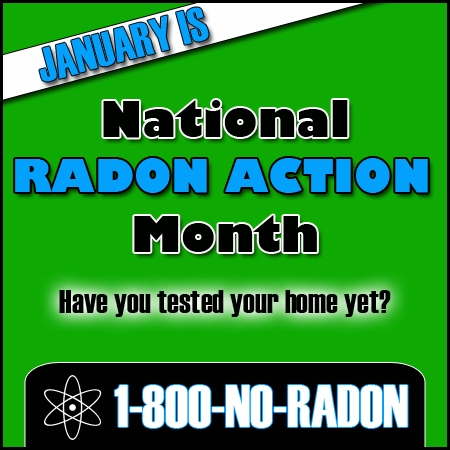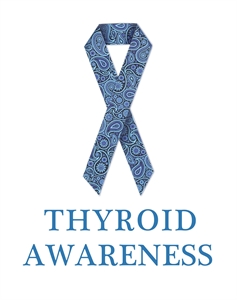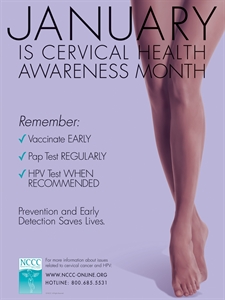National Radon Action Month on January, 2025: what is radon?
January, 2025 is National Radon Action Month 2025. Blog Archive » January is National Radon ... January is National Radon

Indoor Radon is the second leading cause of lung cancer in the United States and the leading cause among non-smokers. Protect your family. Test your home. During the month of January, EPA works to raise the public's awareness about radon and the importance of testing for radon -- especially in homes and schools. The EPA, working in concert with Federal, State, and local governments as well as volunteer organizations, conducts many different programs to educate Americans about the indoor radon health threat. About 1 in 15 homes has high radon levels. If you haven't tested your home, do it now during National Radon Action Month. If you have further questions about Radon, please call your state radon contact (just click on your state), or call the National Radon Information Line at: 1-800-SOS-RADON [1-800-767-7236]

how do you evaluate hourly radon measurements as acceptable or not?
Official limits on radon levels
Although radon in homes has been declared a national health problem, there are no federal or state standards. The Radon Act 51 passed by the US Congress set the natural outdoor level which averages 0.4 pCi/L as the target radon level for homes which unfortunately most homes (two thirds) exceed.
The Environment Protection Agency was given the task of developing practical guidelines. Considering the high cost of mitigation methods available to homeowners in 1980s (averaging $1,200 but up to $2,500), EPA issued its recommendations:
4 pCi/L ... the "action" limit (fix your home)
2 pCi/L ... the "consider action" limit (consider fixing your home)
EPA did not want to force homeowners to install costly radon mitigation systems, leaving the decision up to each homeowner. But at the same time, EPA has made it clear that the 4 pCi/L action limit is not a "safe" level and warned the public:
Any radon exposure has some risk of causing lung cancer. The lower the radon level in your home, the lower your family's risk of lung cancer.
Unlike radon levels in homes, occupational radon limits are governed by law and regulations. The Miners Safety and Health Act (MSHA) covers underground miners. Their annual exposure is limited to less than 4 WLM (Working Level Months), equivalent to 33 pCi/L during their working hours. The Occupational Safety and Health Act (OSHA) limits cumulative radon exposure in the workplace to 30 pCi/L based on 40 working hours per week. Assuming the highest radon level in modern mines, the average person receives in his home at 4 pCi/L over 12 years the same radiation dose as if he/she worked for 5 years in a uranium mine.











